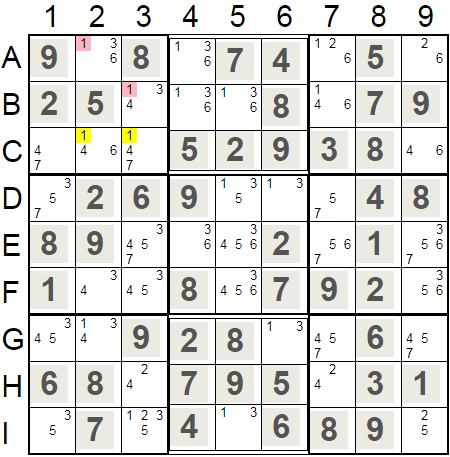
Sudoku is a logic-based number-placement puzzle that normally consists of a 9x9 grid (of 81 squares) subdivided into nine 3 by 3 sub-grids. The individual squares in a grid are usually called cells, and sub-grids often called boxes, blocks, submatrices, regions, or sub-squares.
Sudoku rules are simple: each 3x3 block, each row, and each column has to contain all the numbers from 1 to 9 and each number should only appear once in each box, row, and column. The puzzle provides a partially completed grid, and the goal is to find the remaining entries. Puzzles should have a unique solution.
Usually, Sudoku puzzles are ranked according to the difficulty level. There is no standardized ranking system or metric. Ranking is usually based on the techniques required to generate a solution. While Easy Sudokus can be solved in less than 10 minutes, solving Hard puzzles requires some really difficult logic and may take well over one hour.
While the classic 9×9 Sudoku grid with 3 by 3 regions is by far the most common, there are numerous variations of the basic Sudoku format. Some of them change the size of the grid, add extra constrains, or replace squares by other shapes.